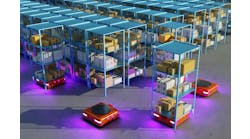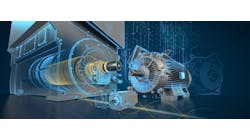According to utility industry estimates, in February 2002 natural gas prices in the U.S. were approximately $2.50/Btu. By February 2004, the price per Btu stood $3 higher at $5.50. Because of increased industrial and utility consumption of natural gas, the U. S. Department of Energy estimates fuel demand will increase 50% over the next 20 years, with nearly 1/3 of all power plants using natural gas as the main source of fuel.
Manufacturers are particularly vulnerable to rising energy costs because they are such big consumers of power. As the demand for natural gas continues to rise, the price of electricity may follow as power generators pass on the increase in fuel prices to its customers.
Why Gas-Fired Power Plants?
Why the move to natural gas? Gas burns much cleaner than coal, and gas-fired power plants are often cheaper to build because it costs much less to control the greenhouse gasses they do emit. Ryan Stensland, program manager for Midwest utility Alliant Energy, estimates that a coal plant can cost nearly $1 billion depending on its size, output and the type of coal it uses for fuel. Alliant Energy is about to complete construction of a new gas-fired power plant in Mason City, Iowa. According to Stensland, the new plant will come in at just under half that amount.
"It's also a matter of timing," said Stensland. "Coal plants can take up to seven or eight years to build, but we'll have our plant up and running in around two years from groundbreaking to generation."
Most regulated utilities in the
| "The biggest drop in energy use comes from just lowering speed or flow by about 20%." |
Manufacturers are most affected by this volatility in pricing, particularly heavy energy-users that run multiple shifts. If demand and pricing generally rise in the winter, it would cost that much more to produce goods in January than it would in May.
"Unfortunately, there's not much end users can do about pricing volatility," said Jodi Palmer, product manager for Alliant Energy's Performance Edge program, which helps large energy users implement energy efficiency programs. "What they can do is minimize costs by improving efficiency throughout their facility."
Whole-Facility Energy Efficiency
Whole-facility energy efficiency is a way manufacturers can take control of their energy costs. There are many processes manufacturers can take advantage of to increase their facility's energy efficiency. Palmer points to lighting systems, compressed air systems, and HVAC systems as prime examples
According to the U.S. Department of Energy, domestic manufacturers spend more than $33 billion on electricity each year and motor systems consume roughly 63% of all energy in the
"More than ever, power optimization tools, such as software, variable-frequency drives, energy-efficient motors and gears, motor controllers, power monitoring equipment, and energy management and support services, are having an immediate, measurable impact on a company's bottom line," a recent ARC Advisory Board white paper said.
Rockwell Automation's Allen-Bradley Drives product manager Rhode Nelson agrees: "When using a variable speed drive on centrifugal loads, energy consumption varies by the cube of speed," said Nelson. "For example, if you're running a fan and you only need half the air flow of the fan at maximum speed, you can use a drive to slow the fan to 1/2 speed. The work load of the fan goes down to 1/8 (1/2)3. That means that 7/8 of the money previously spent to operate the fan stays in the user's pocket."
Motors that power centrifugal fans and pumps account for the majority of industrial applications. The potential for energy savings increases as motor horsepower increases. "High horsepower, centrifugal loads lend themselves to huge amounts of energy savings," said Nelson. "And the biggest drop in energy use comes from just lowering speed or flow by about 20%. If a small reduction in the flow doesn't impact your process that much and you can use half as much energy doing so, than you're going to save big money on your energy bill."
Regenerative drives also help to save on overall energy costs by taking excess electricity the motor doesn't use and putting those kilowatts back on the line for the rest of the machine to use. T-Tek Material handling uses regenerative drives in the palletizers it produces for the soft drink industry, saving its customers up to 10% on electricity costs while using the machinery.
In the past, energy costs were relatively fixed, and there was little manufacturers could do when the bill came. But manufacturers and processors don't have to be at the whim of the energy market's forces or the weather. Technologies are now available that allow manufacturers to take control of their energy costs and protect themselves from market fluctuations.
About the author:
Brian Traff is vice-president, controls-services and equipment for T-Tek Material Handling, Inc. www.tteksystems.com



